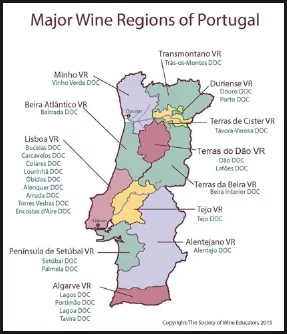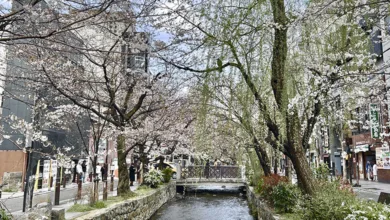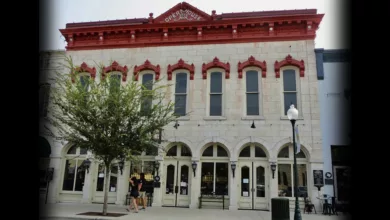
Are you curious about Portuguese wines and traveling through the country’s wine regions? Here is a quick guide to help you explore the amazing local grape bounty of this picturesque country.

Porto DOC*/Douro DOC*–The Patrician
The Douro Valley, a UNESCO World Heritage Site, is beyond impressive when you see it in person. Gorgeous, steep hillside vineyards surround you as you drive down the valley or travel by boat or train. Famous for port wines, check out the seriously delicious still wines, Tinto Douro (red) and Douro Branco (white.)
Dão DOC–The Seductor
Dão lies on a northern plateau surrounded by mountains. Still, wines made here are elegant, balanced, and structured. The white grape Encruzado will make you forget chardonnay. The red grape Jaen, Mencia in Spain, will replace your expensive pinot noir. You’ll also find intensely flavored reds made from Alfrocheiro and Touriga Nacional (Portugal’s de facto national grape.)
Vinho Verde DOC–The Beachcomber
Imagine a seaside retreat in Minho, a plate of the freshest seafood, and bottles of ice-cold Vinho Verde, branco, or rosado chilling in an ice bucket. The blended wines of Minho evoke high summer no matter the time of year.
Alentejo–The Journeyman
With the largest variety of grapes and wines, everyone can find a favorite Alentejo wine. You’ll see half-naked cork trees everywhere in this large central east region. Try Arinto and Antão Vaz for vibrant whites, Aragonês (Tempranillo in Spain), and Alicante Bouschet for enticing reds.
Algarve–The Celebrity
Celebs and tourists frequent this southern coastal region with four DOCs and many sunny beaches. With so many choices for visitors, wine is often overlooked. But the wines here are light and easy to drink, making choosing a bottle for dinner at a fabulous new restaurant simple.
Lisboa–The Hub
The economic engine of the country, Lisboa, contains nine DOCs. After hiking the hills, treat yourself to one of the many tasty, inexpensive wines. Red grapes include Alfrocheiro, Aragonês and Touriga Nacional. Look for amber-colored Malvasia Fina, grown on the cooler western coast in Colares DOC.
Tejo DOC–The Bountiful
Tejo lies east of Lisbon and produces plenty of affordable wines. You will find perfect value blends here. Access is easy from Lisbon because of the excellent transportation infrastructure throughout the country.
Setúbal DOC–The Sweetie
You’ll find everyone from wealthy global travelers to humble tourists and locals in Setúbal. This small coastal region south of Lisbon features a unique golden dessert wine called Moscatel de Setúbal.
Beira Atlântico & Beira Interior DOC–The Fraternal Twins
Beira surrounds the ancient university city of Coimbra. Bairrada DOC, near the coast, is known for sparkling wines made from Pinot Noir-like Baga and fragrant white Fernão Pires (Maria Gomes.) In the much larger interior region, you can sample lovely still-red and refreshing white wines.
Trás-os-Montes DOC–The Mysterious
This northern mountain region sees fewer visitors but a wide range of vineyard sites. Grapes from lower sites deliver strong, full-bodied wines, while those from higher elevations are lighter and fresher.
Távora-Varosa DOC–The Baby
The smallest region, Terras de Cister, surprises visitors with its wide variety of wine styles. Red wine grapes include Tinta Barroca, Touriga Franca, and Arâgones. Whites are Malvasia Fina, Sercial and Gouveio.
Madeira DOC–The Timeless
Producers of the famous fortified wine, the people of Madeira, have been making wine since the 15th century. Madeira wines range from dry to sweet and can last for decades.
*The denominação de origem controlada (or DOC) is the system of protected designation of origin for fruit, wines, cheeses, butters, and other agricultural products from Portugal.





